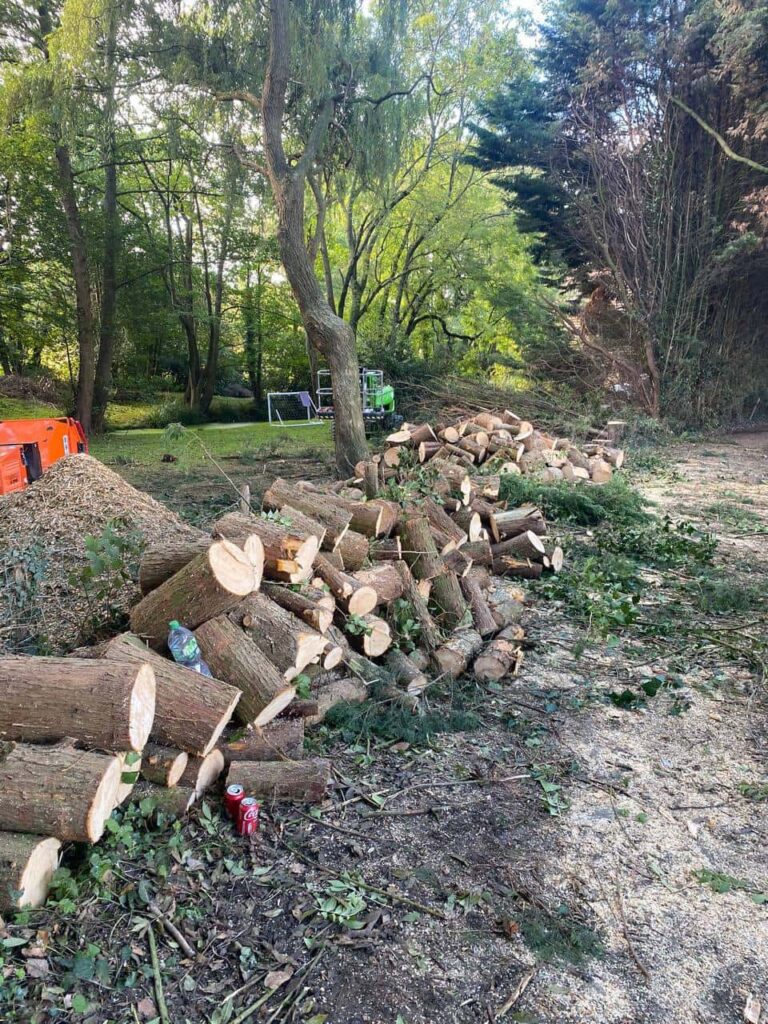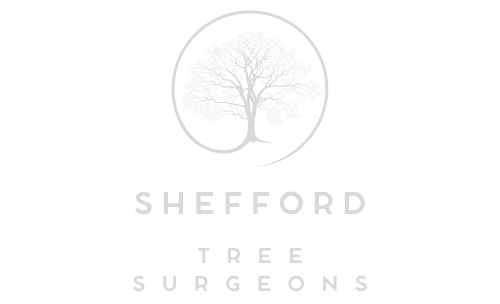Crown Reduction and Root Health: An Unexpected Connection
Introduction
When most people hear the term “crown reduction”, they immediately picture tree surgeons trimming the upper branches of a tree to reduce its height or spread. What often goes unnoticed, however, is the subtle yet significant relationship between the crown and the root system. While they may be at opposite ends of the tree, what happens above can have a profound effect below.
At Shefford Tree Surgeons, we’ve seen how properly executed crown reduction can improve not only the structural balance of a tree but also contribute to the health and stability of its roots. This blog explores the surprising connection between crown work and root vitality — a crucial consideration for any property owner in Shefford and the wider Bedfordshire area.
What Is Crown Reduction?
A quick refresher on this specialist technique
Crown reduction involves selectively removing branches from the top and outer edges of a tree’s canopy. The goal is to reduce its overall size while maintaining the natural shape and structure. This is not to be confused with “topping,” which is an outdated and harmful practice of cutting large sections indiscriminately.
Key benefits of crown reduction include:
- Lightening the load on heavy limbs
- Minimising wind resistance
- Controlling size for aesthetic or safety reasons
- Encouraging healthier regrowth
But what does this have to do with the roots?
The Tree’s Internal Balance: Crown vs. Root
A symbiotic relationship
Trees function as a system. The crown collects sunlight and carbon dioxide to fuel photosynthesis, while the roots absorb water and nutrients to feed the entire structure. These two parts must remain in balance. If the crown grows too large for the roots to support, the tree becomes stressed and vulnerable.
Signs of imbalance can include:
- Wilting or premature leaf drop
- Poor growth or dieback
- Increased susceptibility to pests and disease
By reducing the crown, Shefford Tree Surgeons help restore equilibrium between energy production and nutrient uptake.
How Crown Reduction Can Protect Root Systems
Less demand, less stress
Here’s where things get interesting: an oversized crown demands more water and nutrients than the roots can deliver, especially if those roots are compacted, damaged, or limited by hard surfaces like pavements. This over-demand can cause a tree’s root system to decline slowly, especially during dry spells or periods of high growth.
Crown reduction relieves this burden by:
- Reducing water and nutrient demand from the canopy
- Preventing root exhaustion in compact or urban environments
- Encouraging a healthier distribution of resources throughout the tree
In essence, it allows the roots time to recover and better support the tree long-term.
Encouraging Root Regrowth After Stress
Recovery after environmental damage
Trees can suffer root damage from nearby construction, trenching, foot traffic, or even invasive plant growth. Once roots are compromised, the tree may become unstable or show signs of decline. One of the most practical ways to support recovery is to reduce the strain coming from the canopy.
By working with Shefford Tree Surgeons, homeowners can:
- Pair crown reduction with mulching and watering strategies
- Encourage root regeneration in a less demanding environment
- Improve overall resilience to future environmental challenges
This is especially helpful for mature trees in small gardens or urban plots.
Ideal Situations for Crown Reduction to Support Roots
When it’s worth considering
Crown reduction isn’t always necessary — but there are clear scenarios where it benefits root health directly:
- Trees suffering from drought stress or compacted soil
- Mature trees showing signs of canopy dieback
- Recent changes in the landscape (construction, paving, etc.)
- Large trees in confined spaces struggling to support full crowns
- Visible root damage or limited space for natural root spread
In each case, a strategic reduction can act as a support system for the roots, allowing them to catch up and function more efficiently.
Conclusion
The connection between crown reduction and root health is a perfect example of how tree care must consider the whole organism — not just the parts we can see. A well-executed crown reduction can rebalance the energy exchange within a tree, reduce stress on an overstretched root system, and create a healthier, more resilient plant overall.
If you have a mature or struggling tree on your property in Shefford or anywhere in Bedfordshire, Shefford Tree Surgeons can help assess whether crown reduction is the right step. With thoughtful planning and expert execution, you can ensure both canopy and roots remain strong — now and for years to come.
Call us on: 01462 418 496
Click here to find out more about Shefford Tree Surgeons
Click here to complete our contact form and see how we can help with your tree care needs.

